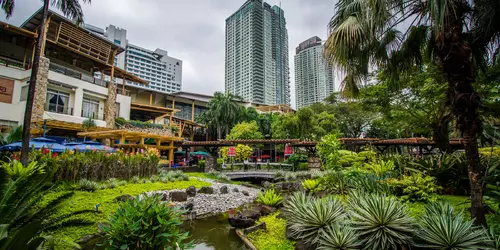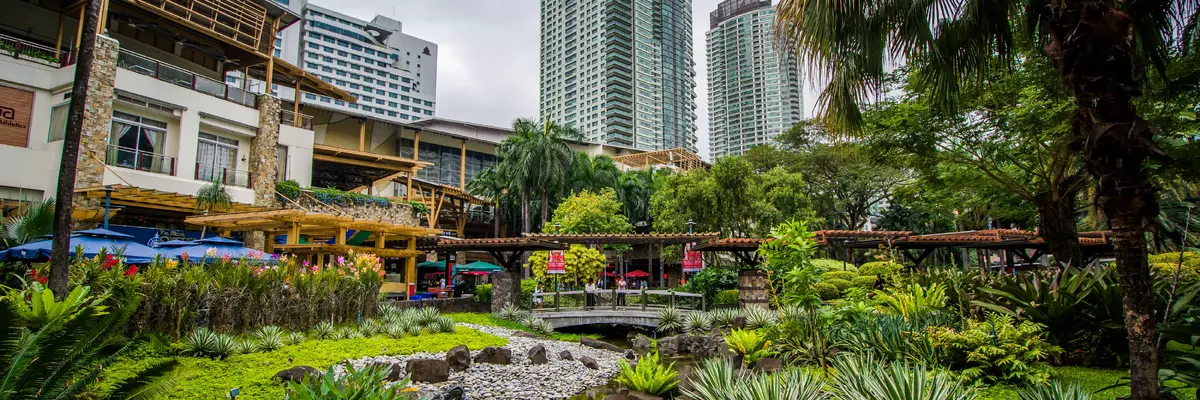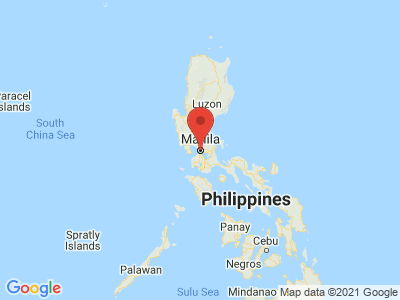Climate Table Manila
Jan | Feb | Mar | Apr | May | Jun | Jul | Aug | Sep | Oct | Nov | Dec | |
|---|---|---|---|---|---|---|---|---|---|---|---|---|
| Max. Temperature | 30° | 31° | 33° | 34° | 34° | 33° | 31° | 31° | 31° | 31° | 31° | 30° |
| Min. Temperature | 20° | 20° | 21° | 22° | 24° | 24° | 24° | 24° | 23° | 23° | 22° | 21° |
| Sun Hours | 6 | 7 | 7 | 9 | 7 | 5 | 4 | 4 | 5 | 5 | 5 | 5 |
| Water Temperature | 26° | 26° | 27° | 28° | 28° | 29° | 28° | 28° | 28° | 28° | 27° | 27° |
| Rain Days | 2 | 1 | 1 | 2 | 7 | 13 | 16 | 19 | 16 | 13 | 8 | 5 |
The climate year of Manila
Manila is located on Luzon, the largest island of the Philippines. It is sheltered in the so-called Manila Bay, which in turn is surrounded by volcanic mountains. About 1.7 million people live in the city, which covers an area of about 39 square kilometers. The city's catchment area is called the Manila metropolitan area. Although, the cities located in the catchment area are administratively independent, they are considered by most residents as part of the capital. A total of about 12 million people live in the Manila metropolitan area. The city was founded around 1500 and its name is derived from a white-flowered mangrove plant. Due to its ideal geographical location in a protected sea bay, Manila soon gained great importance as a port city. In the 16th century, Manila became the capital of the Spanish colony of the Philippines and the city reached its first heyday as an economic center. Today, Manila is the political, economic and cultural center of the Philippines, attracting hundreds of thousands of tourists from all over the world every year.
General information about Manila
Due to the long history of the city, Manila has many interesting sights. The center of the city is the Intramuros neighborhood. This translates to: Inside the Walls. The Spanish colonial masters built a complete city wall around this district in the 16th century. During World War II, the city walls and many historic buildings were destroyed by Japanese troops. Some of the historic buildings have been restored. These include the Manila Cathedral, which was built at the end of the 16th century. Today, the church is on the UNESCO World Heritage List. On the city area of Manila are numerous very beautiful parks. Very worth seeing is the 60-hectare Rizal Park, on the grounds of which are several museums, an open-air theater and the National Library.
Tourism Manila
Manila's climate is largely shaped by its proximity to the sea. There is an almost constant warm temperature throughout the year. The average annual temperature is around 27 degrees Celsius. In the winter and spring months from December to May we have an arid climate. This means that precipitation is less than evaporation. The rest of the year is the rainy season. Thus, in the summer months can fall up to 500 mm of precipitation. August to October is typhoon season in Manila, which sometimes has devastating effects. For visiting the Philippine capital, the months from December to May are the most suitable.


